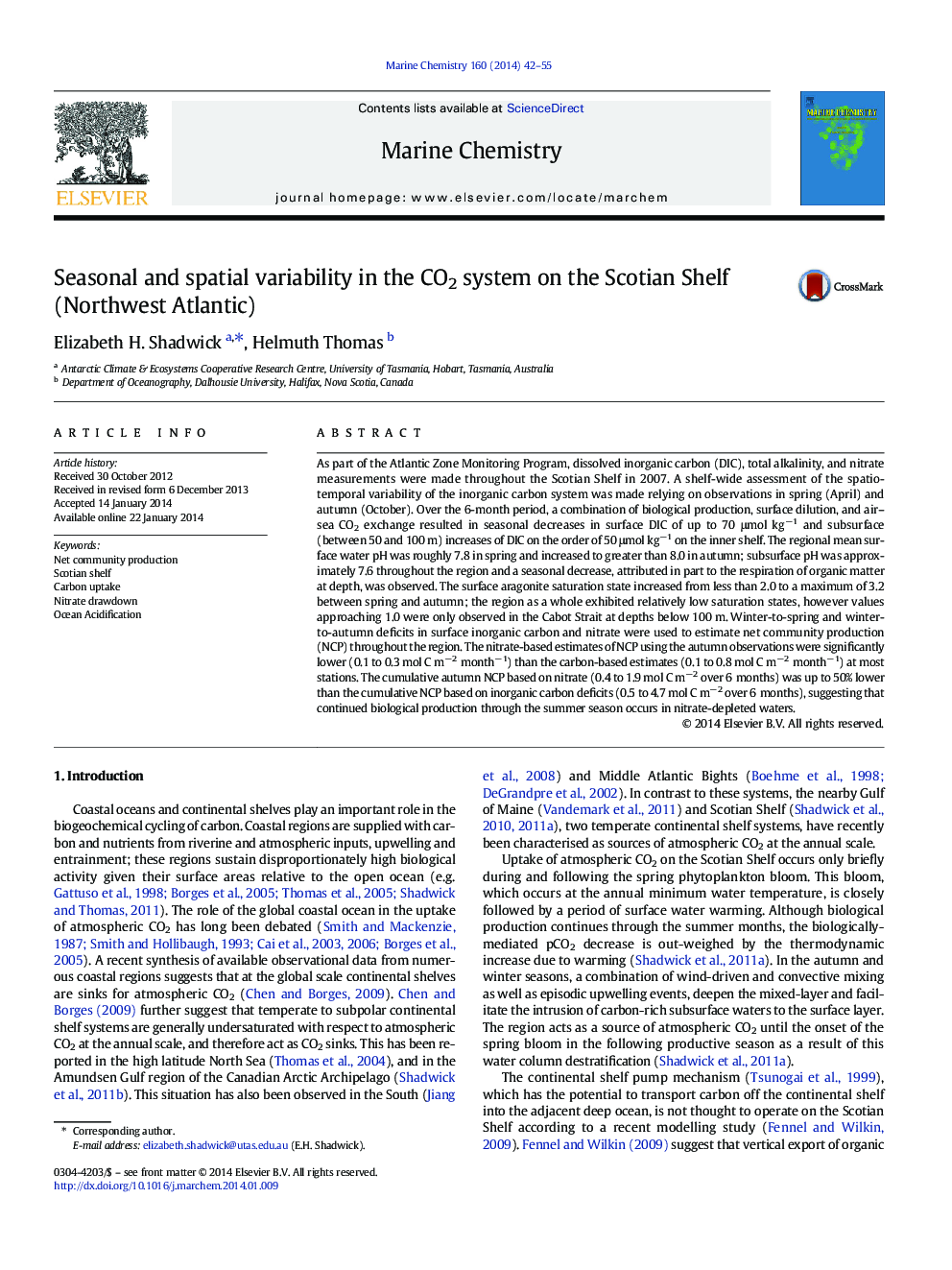| Article ID | Journal | Published Year | Pages | File Type |
|---|---|---|---|---|
| 7699603 | Marine Chemistry | 2014 | 14 Pages |
Abstract
As part of the Atlantic Zone Monitoring Program, dissolved inorganic carbon (DIC), total alkalinity, and nitrate measurements were made throughout the Scotian Shelf in 2007. A shelf-wide assessment of the spatio-temporal variability of the inorganic carbon system was made relying on observations in spring (April) and autumn (October). Over the 6-month period, a combination of biological production, surface dilution, and air-sea CO2 exchange resulted in seasonal decreases in surface DIC of up to 70 μmol kgâ1 and subsurface (between 50 and 100 m) increases of DIC on the order of 50 μmol kgâ1 on the inner shelf. The regional mean surface water pH was roughly 7.8 in spring and increased to greater than 8.0 in autumn; subsurface pH was approximately 7.6 throughout the region and a seasonal decrease, attributed in part to the respiration of organic matter at depth, was observed. The surface aragonite saturation state increased from less than 2.0 to a maximum of 3.2 between spring and autumn; the region as a whole exhibited relatively low saturation states, however values approaching 1.0 were only observed in the Cabot Strait at depths below 100 m. Winter-to-spring and winter-to-autumn deficits in surface inorganic carbon and nitrate were used to estimate net community production (NCP) throughout the region. The nitrate-based estimates of NCP using the autumn observations were significantly lower (0.1 to 0.3 mol C mâ2 monthâ1) than the carbon-based estimates (0.1 to 0.8 mol C mâ2 monthâ1) at most stations. The cumulative autumn NCP based on nitrate (0.4 to 1.9 mol C mâ2 over 6 months) was up to 50% lower than the cumulative NCP based on inorganic carbon deficits (0.5 to 4.7 mol C mâ2 over 6 months), suggesting that continued biological production through the summer season occurs in nitrate-depleted waters.
Related Topics
Physical Sciences and Engineering
Chemistry
Chemistry (General)
Authors
Elizabeth H. Shadwick, Helmuth Thomas,
